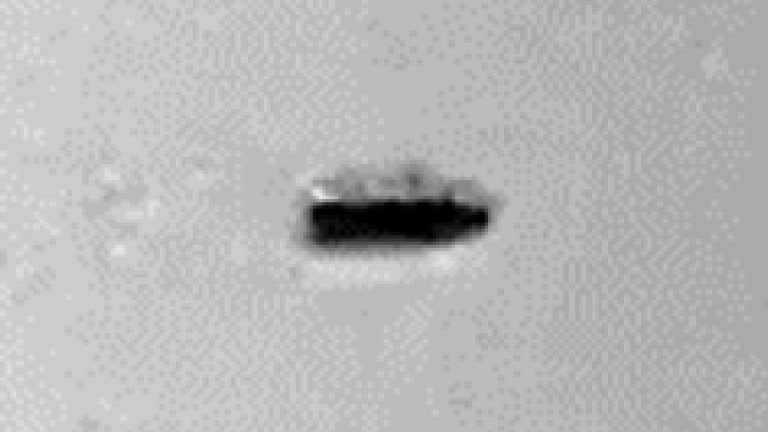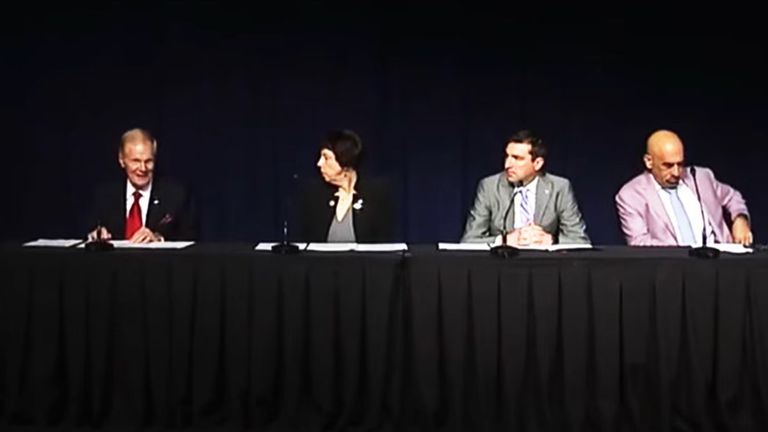If you believe there are UFOs skimming over rooftops, or alien remains stored in secret storerooms in the New Mexico desert, today’s NASA briefing wasn’t for you.
But in terms of how governments and scientists manage the public fascination with extraterrestrials, today’s report from NASA is a significant one.
Scientists release findings on ‘UAPs’ – latest updates
For starters, UFOs are out. The acronym chosen by NASA is UAP – Unidentified Anomalous Phenomena. Less catchy, but more scientifically accurate.
Because in the words of NASA administrator Bill Nelson their review of UAPs is designed to “shift the conversation around UAP from sensationalism to science”.
And according to the new report, there is currently no scientific evidence for UAPs being extraterrestrial.
But that doesn’t mean they should be ignored, it finds. Stating: “A vital part of NASA’s role is exploring the unknown.”
Read more:
NASA taking ‘concrete action’ to explore UFOs
Please use Chrome browser for a more accessible video player
0:37
NASA: ‘UFOs not extraterrestrial’
Ever since people have been spotting objects in the sky there’s been a problem. One that has helped fuel conjecture and conspiracy theories about what they are.
And that’s a lack of concrete data.
Most of these events are fleeting, one-offs. A shiny object on a video, or a blip on a radar screen. Without data, it’s very hard to prove what they are.
Among this report’s recommendations is that more of NASA’s assets and data could be used to better understand unexplained sightings.
Also, there could be more coordination and data sharing among civilian and commercial operators of radars and satellites to better understand the problem.
Given most UAP sightings that do get investigated turn out to be other aircraft, drones or balloons, systems can be improved to spot them.
And in so doing, help identify the really curious ones that might, who knows, be of genuinely unexplained origin.

An image released by NASA in its 2023 report into UFO sightings
Put another way, “if you want to find a needle in a haystack, you better know what hay looks like,” said astrophysicist Dr David Spergel, who led the independent UAP committee for NASA.
There’s justification for the effort according to NASA. Simply because they are unidentified, UAPs could present a genuine risk to aviation. Knowing more about what and where they are is important for safety.
And that leads to another key conclusion of the report. Many people, including professional pilots, are reluctant to report unexplained sightings because of the tin-foil hat stigma attached to “UFO” sightings.

Bill Nelson (far left) led the news briefing
The report recommends using standard aviation safety reporting systems to log UAP sightings as a way to “de-stigmatise” them. That, NASA suggests, will lead to more data and more understanding.
The real search for extraterrestrial life is focused on rocky planets like ours orbiting distant stars.
Only last week the possibility of a chemical signature that might be associated with life was detected around planet K2-18 b, 120 light years from Earth, using NASA’s James Webb Space Telescope.
That will remain NASA’s primary focus for finding alien life. NASA’s associate administrator Nicola Fox confirmed to me today that even though there will be new data sharing and research time spent studying UAPs, no new missions or science programmes are planned to specifically study them.
Will today’s report satisfy those who believe there are government cover-ups to conceal alien encounters? Probably not.
But it is an official recognition that it’s not just OK to wonder – it’s positively encouraged to be curious – and to share any weird sightings you may have.







